【Museums Link Asia-Pacific】Land of Ancestors – Preservation Issue on the Bukit Brown Cemetery, Singapore
Author: Tang Yi-Fang (Researcher, Construction and Planning Agency, Ministry of the Interior, R.O.C.)
Bukit Brown Cemetery in Singapore is known for its importance in the history of Chinese immigration and port development, as well the complexity of its ecosystem. However, when it comes to the development and preservation Bukit Brown Cemetery, the issue of ethnic composition and urban development continues to be the focus of the government and the people, while its connection to Kinmen are another subject worthy of attention.
In 2011, the plan for Singapore government to construct a residential area, along with a road that would cut through Bukit Brown Cemetery, had raised significant opposition in a country known for abiding the law. Fortunately, after the efforts of numerous civil organizations, the government was willing to limit the impact, while preserving part of the graveyard and its compositions. The incident also helped the cemetery to raise awareness among different ethnic groups, and transformed Bukit Brown Cemetery into an eco-museum that can be a part of Singaporean’s lives.
Keywords: Bukit Brown Cemetery, conflict on development, immigration, eco-museum
My apologies! Ancestors!
On May 30th, 2011, the Urban Redevelopment Authority (URA) in Singapore has proclaimed a plan of residential development estimated to accommodate fifty thousand people. On September 12, the same year, Land Transport Authority (LTA), URA and National Park Board (NParks) announced to build up a new road parallel with Lornie Road for easing traffic; at the same time, basic constructions will operate along the line. Beginning in 2013 and completed in 2017, these construction plans that cut through Bukit Brown Cemetery, making an impact on 5,000 grave mounds and their surroundings has raised significant opposition in a country known for abiding the law. Many preservation organizations sprang out, such as SOS Bukit Brown and All Things Bukit Brown (AtBB), working along with Nature Society Singapore, Singapore Heritage Society (SHS) and Asia Paranormal Investigators.
Apart from being a family gathering and worshipping place, why is a cemetery so important for these anti-developing associations?
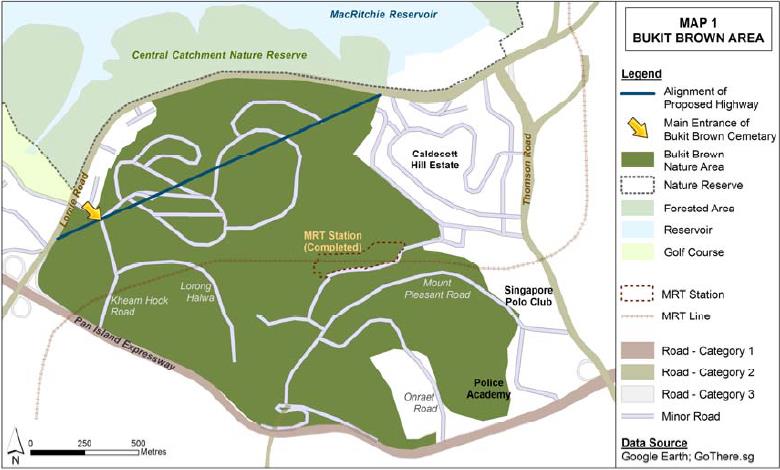
Treasures displayed on site – Bukit Brown
Bukit Brown, also called “Kopi Sua” by Hokkien immigrants, is located in the central area of Singapore, away from the bustling southern business district. As the largest Han Chinese cemetery outside of China, there are grave mounds of one hundred thousand ethnic Chinese on this 223-hectare hill country and its unique history and ecology attracts many visitors to explore.
- History
The official name “Bukit Brown” comes from British captain Brown (George Henry Brown) who has set foot on Singapore in the 1840s and Bukit comes from the Malaysian word “hills”. In 19th century, Brown had once lived here before Hokkien businessman the Wang family bought this place for agriculture and grave in 1872. Singapore Hokkien Association has been running the land ever since as an exclusive graveyard for Hokkien immigrants in Singapore. The oldest grave can be traced back to the 1830s and has buried numerous Hokkien immigrants including pioneers of developing Singapore, revolutionists in Chinese United League and the elder of notables. In the early 20th century, due to a large number of Chinese immigrants, government stepped in and made Bukit Brown a public cemetery until 1973, when they stopped to accept new applications. This cemetery spans through time for more than a hundred years, and represents the early history of Chinese Immigrations and the development of Singapore with the changes from identities of the graves, shape and structure of burial and the content of epitaph. Also, the reign names in the tombstones range from “Huang Qing", “Great Qing", “GuangXu Period", “TianYun", “Republic era", “Showa" and “AD".
- Ecology
Geographically close to the largest protected area in Singapore, “Central Catchment Nature Reserve”, Bukit Brown Cemetery has preserved natural and unspoiled landscape, allowing the place to become one of the 28 protected districts marked by Singapore Nature Society. The Nature Society has done researches on the biological diversity in Bukit Brown and discovered 90 kinds of bird; among them are 13 national endangered species including White-bellied Woodpecker, White-rumped Shama, Spotted Wood Owl, Violet Cuckoo, Blue-crowned Hanging Parrot, Thick-billed Green Pigeon and Changeable Hawk Eagle etc. As a highly-developed country, this area has functions of water and soil conservation, reducing heat island effect and providing a place for rest and recreation.
Due to the two reasons mentioned above, Singapore Heritage Society (SHS) has proposed Bukit Brown Cemetery as a heritage park with five values:
- Space Specific to the Region
- Historical Connectivity to the Region
- A More Democratic Singapore Story
- Safeguarding Cultural Practices
- A History of People, Streets and Places
World Monuments Fund had proclaimed that Bukit Brown Cemetery was included in 2014 World Monuments Watch List, approving its position in history and ecology, and raising global profile. Civil organizations raised more attention toward the issue through doing researches, publications and promoting tourism, and have also conceived some alternatives such as establishing toll fees or widening Lornie Road etc.; however, the government is apathetic toward all the effort they have done.
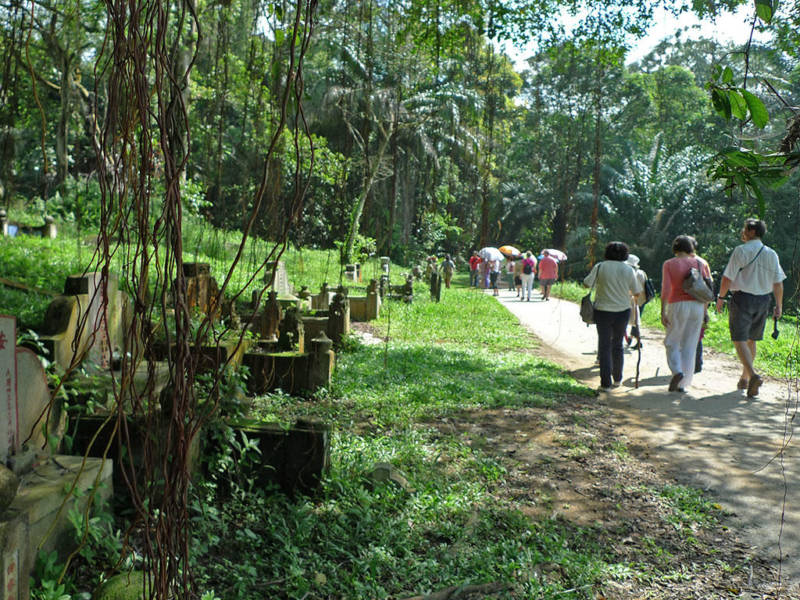
The dispute over ethnic composition and urban renewal in ethnic Chinese cemetery
When it comes to the future of Bukit Brown Cemetery, the government and people focus on issues of ethnic composition and urban development, while I pay more attention on its connection to Kinmen instead.
- Ethnic Chinese cemetery and ethnic composition
Forced to separate from Malaysia in 1965, there were no development of local nationalism at the beginning in Singapore. The three groups were ethnic Chinese, Malay and Indians, considering Singapore as a shelter or a temporary place for living and lacking the common memories or ideas while their sense of belonging and self-identity still connects tightly to their home countries. At that time, the strategy of incumbent People’s Action Party for the most ethnic Chinese is to eliminate the characteristic of Chineseness to prevent other ethnicities and countries see Singapore as overseas power of China. Policy White Paper in 1991 had reiterated that “Country takes priority over groups and society takes priority over the individual.” Ancestors buried in Bukit Brown Cemetery have direct and indirect relations with the present Singaporean. Through sacrificial actions, the area acts as a ground connecting the present, the past and self-identities of modern Singaporean. However, the cemetery dedicated for ethnic Chinese is easily considered Chinese privilege, diverging from the discourse of “racial equality” from the government. Hence, the government should be more thoughtful of this to prevent from being trapped in a dilemma.
- Ethnic Chinese cemetery and urban renewal
In the “Population White Paper” published in 2013, the government of Singapore indicated that due to population aging and a drop of fertility rate, they will continuously introduce immigrants and have planned to increase the population to 6.9 million in 2030, growing 30% in total to keep labor competitiveness. That is the reason why the government will need more accommodation in advance; also, they have watched Bukit Brown Cemetery for a while since it has not been opened for over 40 years and people are reckless of the old graves; furthermore, the way of ethnic Chinese inhumation makes an impression that it’s messy, wasteful and filthy. In fact, it is not the first case that government adds accommodation for people by removing graveyard. For example, the first public housing located in Tiong Bahru, Bishan residential town, famous Ngee Ann City complex on Orchard Road were all reconstructed to housings, roads or commercial developments from graveyard. As for the destruction of ecology caused by urban renewal, government of Singapore tends to use the method of ecological compensation to replace deep-rooted old trees and weeds with plants with good care, fitting in the name of “Garden City”. However, it’s just a bubble for the elitism not the populism, and the issue of environment is still worthy of discussion.
- Bukit Brown Cemetery & Kinmen
Meanwhile, Kinmen also encountered a dispute of development and preservation. There is an interesting connection between Bukit Brown Cemetery and Kinmen. A large number of people from Kinmen quested to move to Singapore (Chain Migration) in the 1860s, through 1912-1929 and from 1937-1945. A common saying “six dies, three survives and one turns back” explains the sorrow of immigrants. They sailed to make a living in a completely unknown place in the South-east Asia. Most of them worked as hard labors, such as shipbuilders and traders. At that period of time, people from Kinmen had built up a least 34 laborer’s quarters (Coolie Keng) along the banks of Singapore River, accommodating around 30 men a room. They support each other and form a community to ensure the advantage in business. Picture a scene with thousands of Kinmen immigrants crowded in Coolie Keng on the Singapore River bank. If those immigrants made a fortune, they would build up houses, maintain Ancestral Hall and operate schools in their hometown; when they got old in foreign land, the respect from their descendants will be shown on the burial mound.
There is a tombstone with the carving “Kinmen” inside the Bukit Brown Cemetery, recording the history of Kinmen people participating in the development of Singapore. Amongst the tombs the largest one is the family cemetery of One Sam Leong (1857-1917) whose ancestral town is Kinmen and has made a fortune in the trading business. The shape and structure of his gravestone, and the couplets on it both marks the identity of the owner as a wealthy ethnic Chinese in the 600 square meter area; moreover, it also reveals the cultural influence due to long-term living in South-east Asia with the Sikh guards, commonly known as Bangkali, standing in front of the tombs.
The importance of Bukit Brown Cemetery to Kinmen is that although the missing family memories and historical information caused by wars can be found in ethnic Chinese organizations in Singapore, these organizations had been destroyed by high pressure control under Japan colonial government and rapid development of postwar period. Only Bukit Brown Cemetery can complete the puzzle.
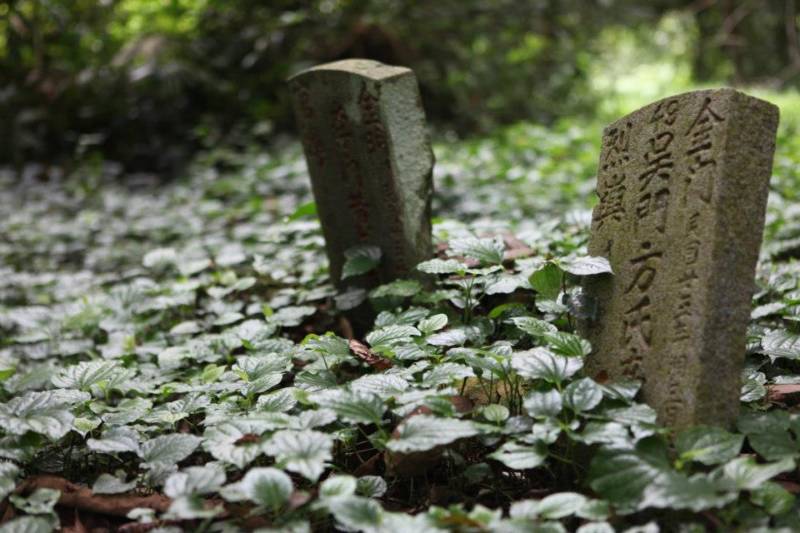
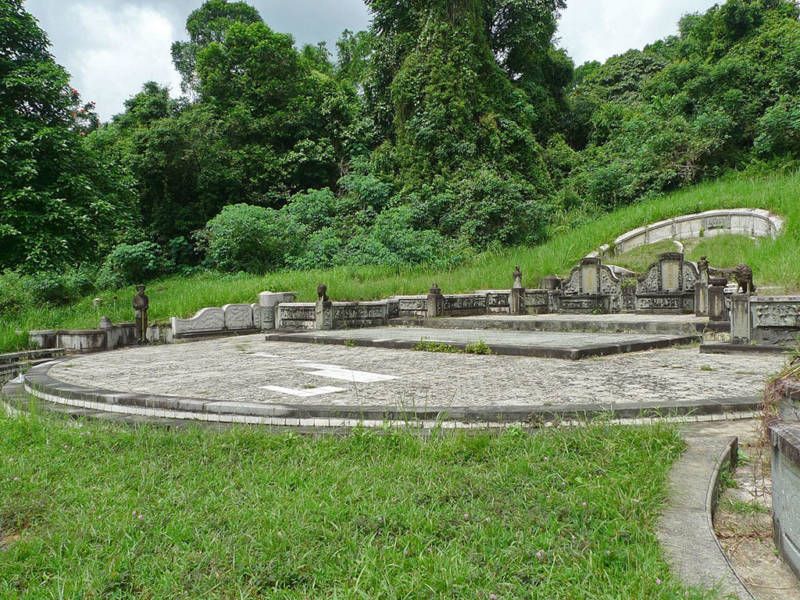
Long live the spirit
In the country emphasizing to replace contention by consensus, Bukit Brown Cemetery has long been the center of social movement lingering between the government and civilians, development and preservation. Even though the government still tries to interfere with this area, different groups in Singapore have always been keeping an eye on this issue. Through all the hardworking from civil organizations, making government scales the influential area down and planning to filing of tombstones and composition connected Southeast Asia and specific district in China. Bukit Brown Cemetery is an “Ecology Museum”, being a mirror for the locals to find the explanation to the history of the region and their ancestors and for tourists to understand and then respect the spirit of this area. The Spirit of the immigrants buried inside Bukit Brown Cemetery lives on with the families and in the heart of Singaporeans.
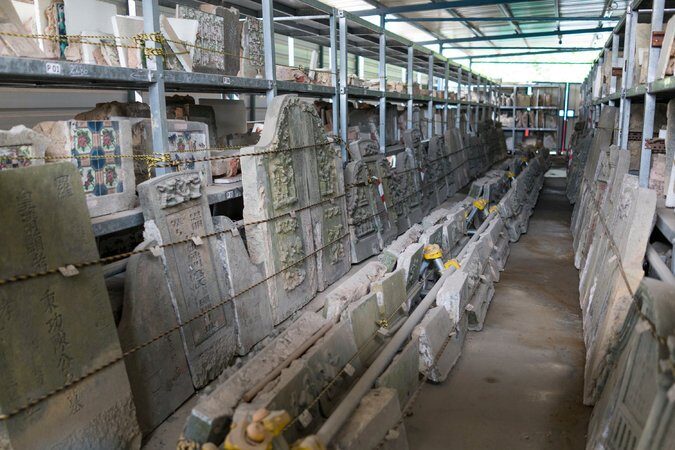
Notes:
- Unofficial reign names. Many organizations relative to Hongmen will use “Tian Yun” as reign name. Revive China Society and Chinese United League in the late Qing dynasty will also use this name.
- “The quest (Chain Migration)”: travel to Southeast Asia to make a living.
- “Bengali” was people from West Bengal and Bangladesh, but had been mistaken to Indian Sikhs in Punjab by ethnic Chinese for more than one hundred years. They are royal and usually appointed to be police, guards and servants when they came to Southeast Asia with the British in 19th century. Ethnic Chinese compare themselves to be British colonialist who can afford Bengali guards and servants and declare their social status, fortune and greatness.
References:
- All Things Bukit Brown —Heritage. Habitat. History http://bukitbrown.com/main
- Bukit Brown Municipal Cemetery http://eresources.nlb.gov.sg/infopedia/articles/SIP_1358_2009-07-13.html
- Bukit Brown: Living Museum of History and Heritage http://www.bukitbrown.org
- Huang Jianli, 2014, “Resurgent Spirits of Civil Society Activism: Rediscovering the Bukit Brown Cemetery in Singapore.” Journal of the Malaysian Branch of the Royal Asiatic Society · Volume 87, Part 2, No. 307, December 2014. pp. 21-45.
- Land Transport Authority. “Construction of New Dual Four-lane Road to Relieve Congestion along PIE & Lornie Road and Serve Future Developments,” last modified October 5, 2012 http://app.lta.gov.sg/apps/news/page.aspx?c=2&id=rj2i4o1u3d7018466v86y82epxjj32mwbvnhu6rpwt8lplkgo6
- The Nature Society (Singapore)’s Conservation Committee, 2011, Nature Society (Singapore)’s Position on Bukit Brown
- 江柏煒,2012a,〈新加坡河駁船業「估俚間」的角色及其變遷:以浯江公會為例〉,「海洋史研究工作坊」,臺北:中央研究院人文社會科學研究中心。
- 江柏煒,2012b,〈金門洋樓:一個近代閩南僑鄉文化變遷的案例分析〉,《國立臺灣大學建築與城鄉研究學報》,第20期,pp. 1-24。
- 衣若芬,2015,墓刻二維碼,http://ilofen.blogspot.tw/2015/11/blog-post_10.html
- 洪鎌德、郭俊麟,1997〈從新加坡看臺灣族群問題-族群和諧與共榮〉,「族群正義與人權保障研討會」,二二八事件紀念基金會http://www.228.org.tw/downloadfile.aspx?fid=1B4345078CF72EDA
- 紀舜傑,2013,〈新加坡的國家認同-從生存威脅到永續執政的國族建構〉,《臺灣國際研究季刊》,第9卷第1期,2013/春季號,pp. 59-47。
- 張碧君,2014,〈城市遺產與城市發展之衝突:以新加坡咖啡山為例〉,《都市與計畫》,41:4 2014.12,pp. 329-355。
- 張譽騰,2004,《生態博物館:一個文化運動的興起》,臺北:五觀藝術管理有限公司。

